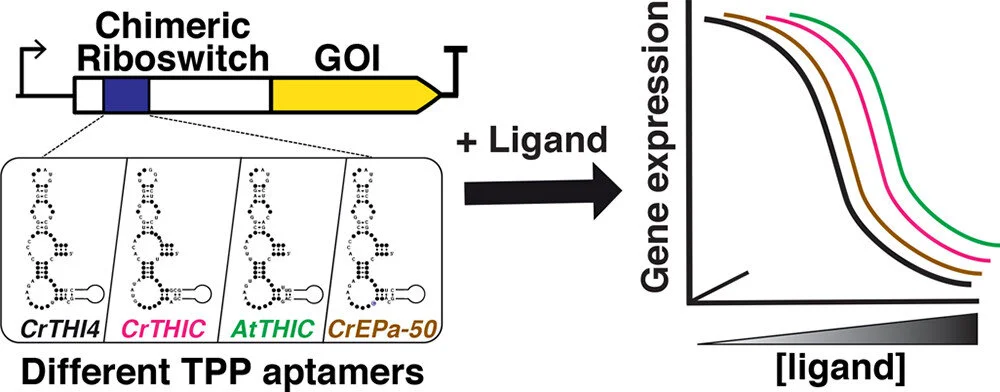OpenPlant PI Alison Smith (University of Cambridge) recently published her lab’s work on riboswitches in the green alga Chlamydomonas.
Riboswitches offer unique tools that can be used to generate genetic circuits to advance plant synthetic biology:
Development of Novel Riboswitches for Synthetic Biology in the Green Alga Chlamydomonas
Payam Mehrshahi, Ginnie Trinh D. T. Nguyen, Aleix Gorchs Rovira, Andrew Sayer, Marcel Llavero-Pasquina, Michelle Lim Huei Sin, Elliot J. Medcalf, Gonzalo I. Mendoza-Ochoa, Mark A. Scaife, and Alison G. Smith
ACS Synth. Biol. (2020) 9, 6, 1406–1417
https://doi.org/10.1021/acssynbio.0c00082
Abstract
Riboswitches are RNA regulatory elements that bind specific ligands to control gene expression. Because of their modular composition, where a ligand-sensing aptamer domain is combined with an expression platform, riboswitches offer unique tools for synthetic biology applications. Here we took a mutational approach to determine functionally important nucleotide residues in the thiamine pyrophosphate (TPP) riboswitch in the THI4 gene of the model alga Chlamydomonas reinhardtii, allowing us to carry out aptamer swap using THIC aptamers from Chlamydomonas and Arabidopsis thaliana. These chimeric riboswitches displayed a distinct specificity and dynamic range of responses to different ligands. Our studies demonstrate ease of assembly as 5′UTR DNA parts, predictability of output, and utility for controlled production of a high-value compound in Chlamydomonas. The simplicity of riboswitch incorporation in current design platforms will facilitate the generation of genetic circuits to advance synthetic biology and metabolic engineering of microalgae.


